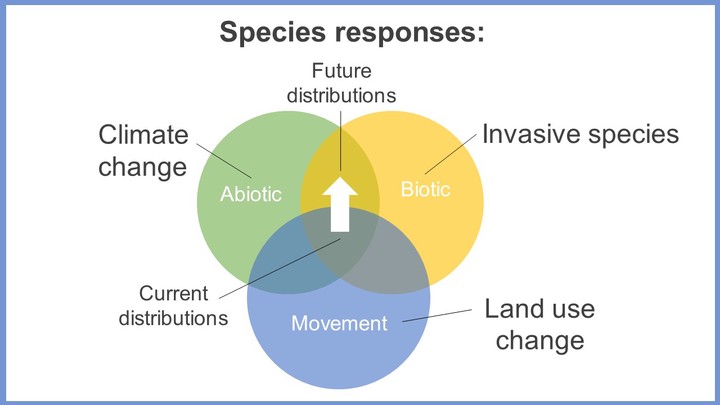Climate-induced species redistribution
 Biotic-Abiotic-Mobility diagram of the influence of global change on species’ distributions
Biotic-Abiotic-Mobility diagram of the influence of global change on species’ distributionsPublications
Published
- Lawlor, JA et al. 2024. Mechanisms, detection and impacts of species redistribution under climate change. Nature Reviews Earth & Environment https://doi.org/10.1038/s43017-024-00527-z
- Comte, L, et al. 2024. Bringing traits back in the equation: A roadmap to understand species redistribution. Global Change Biology https://doi.org/10.1111/gcb.17271
Forthcoming
- Klinges, DK, JA Baecher, et al. In press. Proximal microclimate: moving beyond spatiotemporal scale to improve predicted biological responses. Global Ecology and Biogeography
- Evans, L, JA Baecher, BR Scheffers. In revision (major). Invasion risk posed by the pet trade. Frontiers in Ecology and the Environment